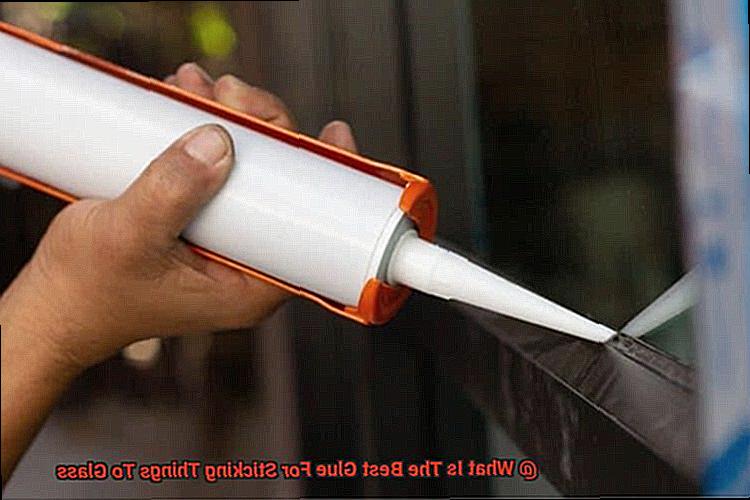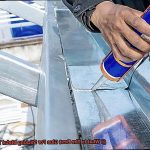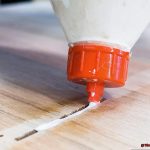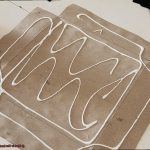Fixing or crafting with glass can be tricky, especially when it comes to finding the right adhesive. With so many options out there, it’s hard to know which glue will actually stick and hold strong.
After extensive research and testing, we’ve uncovered the ultimate solution. In this blog post, we’ll break down the best glue for sticking things to glass, giving you all the info you need to make an informed decision. Whether you’re a DIY enthusiast, a professional artist, or just trying to repair something special, we’ve got your back. So let’s jump in.
Finding the perfect adhesive for glass is no easy task. You need something that’s strong enough to hold, but also transparent and easy to use. We’ve tested a bunch of different glues for various applications – from delicate decorations on vases to fixing broken glass items – so you don’t have to waste time and money on trial and error.
Now you might be thinking, “Can’t I just use any old glue?” Well, not quite. Glass has its own challenges when it comes to adhesives. It can be smooth and slippery, making it tough for regular glues to form a reliable bond without leaving behind residue or weak spots. That’s why our research focuses specifically on glues formulated for glass.
As we go along, we’ll discuss top-rated glues that are designed specifically for glass. We’ll dive into their features and give real-life examples of how they’ve successfully been used. We’ll also consider important factors like drying time, water resistance, and temperature resistance so you can choose the best adhesive for your unique needs.
So whether you’re planning a stunning glass mosaic project or need to fix a cherished heirloom, this guide has got you covered. No more frustrating mishaps or disappointing results. Get ready to achieve professional-grade results with the perfect adhesive. Let’s get started.
What is Glue?
Contents
- 1 What is Glue?
- 2 Types of Glues for Glass
- 3 Epoxy Glue
- 4 Cyanoacrylate Glue (Super Glue)
- 5 Silicone Adhesive
- 6 UV-Curing Adhesive
- 7 Multipurpose Adhesives
- 8 Factors to Consider When Choosing the Right Glue for Sticking Things to Glass
- 9 Preparing the Glass Surface Before Applying the Adhesive
- 10 Benefits of Using Epoxy Glue on Glass Surfaces
- 11 Benefits of Using Cyanoacrylate (Super) Glue on Glass Surfaces
- 12 Benefits of using Silicone Adhesive on Glass Surfaces
- 13 Benefits of using UV-Curing Adhesive on Glass Surfaces
- 14 Conclusion
Glue is an adhesive substance that is used to join or bond different materials together. It is a sticky material that, when applied to two surfaces, securely holds them together. Glue comes in various forms such as liquid, gel, or solid, and its composition depends on its intended use.
One of the primary purposes of glue is to provide a strong and durable bond between two surfaces. It achieves this by creating a molecular attraction between the molecules of the glue and the molecules of the surface being bonded. This bond is formed through a chemical reaction, either by evaporation of solvents or through curing processes like heat or moisture.
Glue can be made from natural materials such as plant and animal derivatives, or synthetic compounds developed in laboratories. Some common types of glue include wood glue, epoxy resin, super glue, and hot glue. Each type has its own unique properties and characteristics that make it suitable for specific applications.
Wood glue, for example, is specifically formulated to bond wood surfaces together. It is typically water-based and dries clear, making it ideal for woodworking projects where aesthetics are important. Epoxy resin, on the other hand, is a two-part adhesive that consists of a resin and a hardener. When mixed together in the correct proportions, it creates a strong and durable bond that can be used on various materials including glass.
Super glue, also known as cyanoacrylate adhesive, is a fast-acting adhesive that bonds quickly and securely. It is often used for small repairs or situations where immediate adhesion is required. Hot glue, as the name suggests, is applied in its molten state using a hot glue gun. It solidifies quickly upon cooling and provides a strong bond on various surfaces.
When it comes to sticking things to glass, choosing the right type of glue is crucial. Glass is a smooth and non-porous surface, which can make it challenging for certain glues to adhere properly. Some glues are specifically designed for bonding glass and have formulations that ensure optimal adhesion.
Epoxy glue is known for its strong adhesive properties and can create a permanent bond between glass and various materials. Cyanoacrylate glue, or super glue, bonds quickly and securely and works well on glass surfaces. Silicone adhesive is flexible and durable, making it suitable for attaching decorative elements or sealing glass joints. UV-curing adhesive is ideal for transparent or clear glass projects and forms a strong bond quickly when exposed to UV light. Multipurpose adhesives are designed to provide strong and versatile bonding capabilities on various materials, including glass.
Types of Glues for Glass
There are several types of glues that can be used for sticking things to glass, each with its own advantages and disadvantages.
One commonly used glue for glass is epoxy. Epoxy glues are known for their strength and durability, making them a popular choice for projects that require a strong bond. They are resistant to water, chemicals, and temperature changes, making them suitable for both indoor and outdoor applications. However, epoxy glues can be messy to work with and may require mixing before use.
Another type of glue that works well on glass is cyanoacrylate, also known as super glue. Cyanoacrylate glues bond quickly and securely, creating a strong adhesive bond. They are also resistant to moisture and temperature changes. However, super glue can be brittle and may not be suitable for projects that require flexibility.
Silicone adhesives are also commonly used for bonding glass. Silicone glues offer excellent flexibility and resistance to moisture, making them ideal for projects that require a waterproof seal. They can withstand high temperatures without losing their adhesive properties. However, silicone adhesives may take longer to cure and may not provide as strong of a bond as epoxy or super glue.
UV curing adhesives are another option for bonding glass. These adhesives require exposure to ultraviolet light to cure and create a strong bond. UV curing adhesives are known for their quick curing time and excellent clarity, making them suitable for projects that require an invisible bond. However, they may not be as strong as other types of glues and may require special equipment for curing.
Finally, there are specialized glass adhesives available in the market. These adhesives are specifically designed for bonding glass surfaces and offer excellent clarity and strength. They are typically non-yellowing and can withstand extreme temperatures. However, specialized glass adhesives may be more expensive than other options.
Epoxy Glue
Epoxy glue is a remarkable adhesive that has gained popularity for its ability to bond materials to glass. This unique glue consists of two components – resin and hardener – that must be combined to activate its adhesive properties. Once mixed, epoxy glue forms a resilient and durable bond that can withstand a variety of conditions.
One of the standout features of epoxy glue is its ability to create a clear and transparent bond on glass surfaces. Unlike other adhesives that may dry with a cloudy or yellowish appearance, epoxy glue dries crystal clear. This characteristic makes it an ideal choice for applications where aesthetics matter, such as repairing transparent objects or working on glass crafts.
Moreover, epoxy glue boasts exceptional resistance to moisture, chemicals, and temperature changes. This makes it suitable for both indoor and outdoor use, as it can endure exposure to water, humidity, and extreme temperatures without compromising its adhesive strength. Whether you need to stick objects to a glass surface in your bathroom or on the exterior of your house, epoxy glue guarantees a reliable bond that stands the test of time.
The versatility of epoxy glue is another noteworthy advantage. It can effectively adhere various materials to glass, including metal, plastic, ceramic, and even other pieces of glass. This makes it a go-to option for a wide range of projects, from repairing broken glassware to creating intricate and captivating glass art pieces.
To ensure successful bonding with epoxy glue, proper preparation of the glass surface is crucial. The glass should be meticulously cleaned and free from any dirt, grease, or residue that may hinder the adhesion process. Gently cleaning the surface with warm water and a mild detergent, followed by thorough drying, sets the stage for a flawless bond.
When applying epoxy glue to glass, using a small brush or applicator ensures precise and controlled application. Applying a thin layer of the mixed epoxy onto one of the surfaces you wish to bond together and pressing the objects firmly completes the process. It is important to hold the objects in place for the recommended curing time, which can vary depending on the brand and type of epoxy glue used. During this crucial period, avoid any movement or disturbance that could compromise the bond.
Cyanoacrylate Glue (Super Glue)
Cyanoacrylate glue, commonly known as super glue, is a remarkable adhesive that has gained popularity for its ability to bond glass surfaces. This adhesive possesses a range of properties that make it an excellent choice for various applications.
One of the key advantages of cyanoacrylate glue is its rapid drying time. Within seconds of application, the glue sets, allowing for quick and efficient bonding. This is especially beneficial when working on time-sensitive projects or when immediate adhesion is required.
In addition to its fast-drying nature, cyanoacrylate glue boasts exceptional bonding strength. Once cured, it forms a robust bond between glass surfaces, ensuring long-lasting durability. This strength makes it suitable for projects that require a secure and reliable bond.
Furthermore, cyanoacrylate glue exhibits versatility in its ability to bond different materials. In addition to glass, it can effectively bond metal, plastic, and ceramics. This makes it a versatile adhesive that can be used in a wide range of applications.
Another notable property of cyanoacrylate glue is its resistance to moisture and temperature changes. Once fully cured, the bond formed by this adhesive remains strong even when exposed to water or varying temperatures. This makes it suitable for both indoor and outdoor use, providing confidence in its longevity and performance.
Despite its many advantages, there are a few factors to consider when using cyanoacrylate glue on glass surfaces. It is important to ensure that the glass is clean and free from any dust or debris before application. Additionally, using the adhesive sparingly is crucial to avoid messy residue on the glass surface. Furthermore, while the initial bond strength sets quickly, it is recommended to wait approximately 24 hours for the adhesive to fully cure and reach its maximum strength.
Silicone Adhesive
Silicone adhesive is a versatile and powerful sealant that is commonly used for sticking things to glass surfaces. This adhesive contains silicone as its main ingredient and is typically found in the form of a paste or gel. It is applied using a caulking gun or a tube, making it easy to use for various applications.
One of the key advantages of silicone adhesive is its ability to create a flexible bond. This is particularly important when working with glass, as it can expand and contract with temperature changes. The flexibility of silicone adhesive allows it to withstand these movements without cracking or losing adhesion. This makes it an excellent choice for bonding materials to glass surfaces that are exposed to different environmental conditions.
Silicone adhesive also offers exceptional resistance to moisture and chemicals. This makes it suitable for use in areas where water exposure is common, such as bathrooms and kitchens. It can effectively seal gaps and prevent water from seeping through, ensuring a watertight bond. Additionally, its resistance to chemicals makes it ideal for bonding objects that may come into contact with harsh substances like cleaning agents or solvents.
To ensure a successful bond when using silicone adhesive on glass, proper surface preparation is essential. The glass surface should be clean, dry, and free from any debris or oils. This can be achieved by wiping the surface with a mild detergent or glass cleaner and allowing it to dry completely before applying the adhesive. It is also recommended to slightly roughen the surface using sandpaper or an abrasive material to enhance adhesion.
When applying silicone adhesive, it should be distributed evenly and in a sufficient amount to ensure proper bonding. Following the manufacturer’s instructions regarding curing time and temperature requirements is crucial, as these may vary depending on the specific product used. Once applied, the adhesive should be left undisturbed until it has fully cured.
UV-Curing Adhesive
UV-curing adhesive, a remarkable type of glue that is cured or hardened using ultraviolet (UV) light, has revolutionized the world of bonding. This adhesive, with its fast curing time and ability to form a strong and durable bond, has become a go-to choice in various industries.
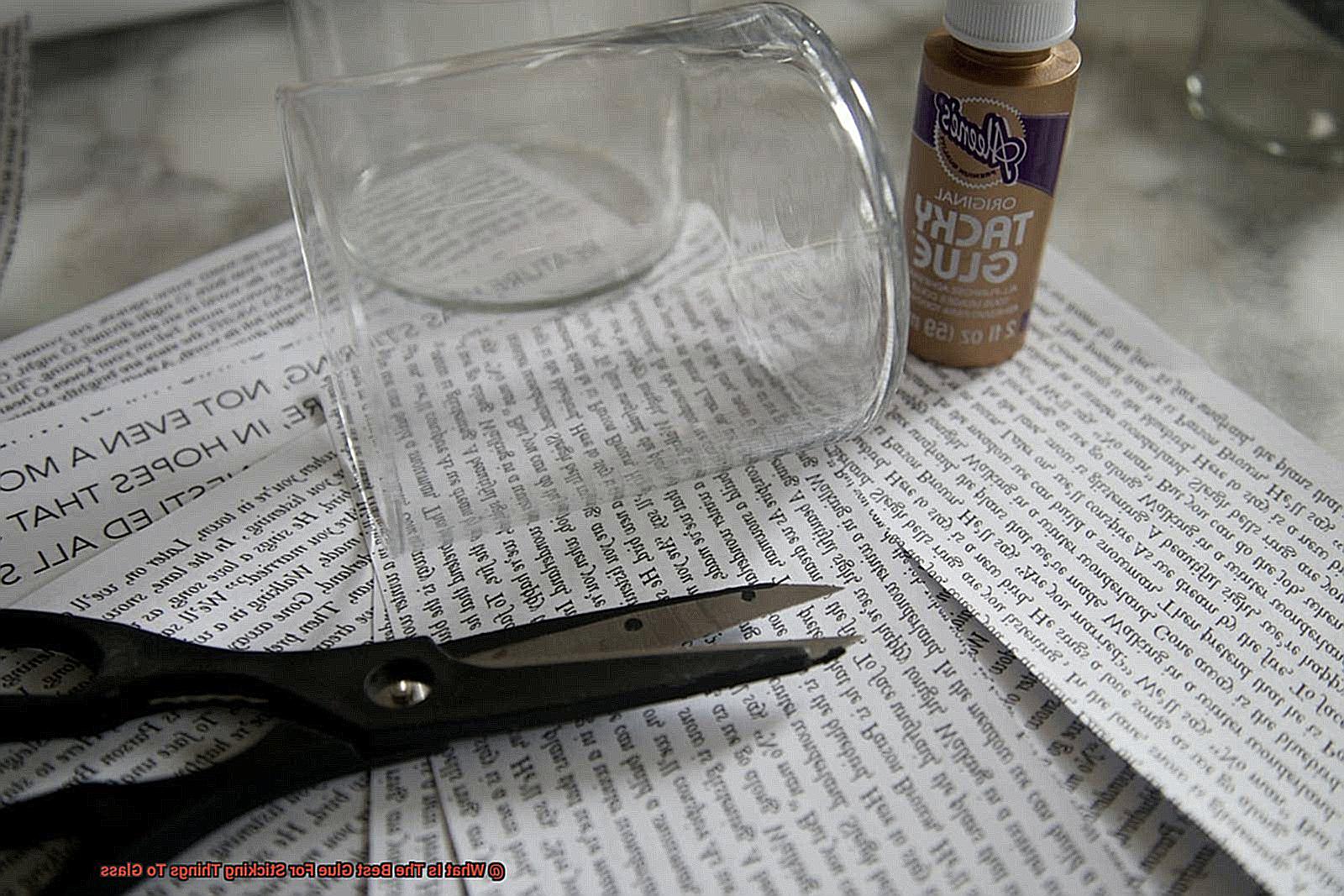
Imagine a glue that sets in mere seconds or minutes, rather than hours or days. UV-curing adhesive offers exactly that. It is perfect for applications that demand quick assembly or production processes, eliminating the need for long waiting times.
Not only does this adhesive cure rapidly, but it also forms a bond that can withstand harsh conditions. Once cured, it becomes resistant to heat, moisture, and chemicals. Imagine a bond that can withstand extreme temperatures, damp environments, and exposure to harsh substances. UV-curing adhesive delivers just that.
Transparency is another remarkable feature of this adhesive. When bonding things to glass surfaces, maintaining their clarity and beauty is crucial. Unlike other adhesives that may leave visible residue or alter the appearance of glass, UV-curing adhesive dries clear and preserves the transparency of the glass.
The versatility of UV-curing adhesive is yet another reason for its popularity. It can be applied using various techniques such as syringe dispensing, spray coating, or screen printing. This flexibility allows for precise and controlled application, ensuring optimal bonding results.
Industries such as electronics, automotive, and glass manufacturing have embraced the power of UV-curing adhesive. In electronics, it is used to bond components to glass displays or secure wires and connectors. In the automotive industry, it bonds glass components like windshields or windows to the vehicle’s frame. In the realm of glass manufacturing, it brings together decorative glass items like furniture or lighting fixtures.
Multipurpose Adhesives
Multipurpose adhesives are a versatile and effective solution for sticking things to glass. They come in different forms, such as liquid, gel, or tape, providing options for various applications and preferences. However, not all multipurpose adhesives are suitable for glass, so it is crucial to choose the right one for optimal results.
One important factor to consider when selecting a multipurpose adhesive for glass is its bonding strength and durability. Glass is a smooth and non-porous surface, making it challenging for adhesives to create a strong bond. To overcome this challenge, it is recommended to look for adhesives specifically designed for glass bonding or those with excellent adhesion properties on smooth surfaces.
Another essential consideration is the drying time of the adhesive. Some multipurpose adhesives require longer drying times, while others offer quick bonding. The drying time can be crucial depending on the project at hand and the desired timeframe for completion.
Flexibility is also worth considering when choosing an adhesive for glass. Glass can be fragile and prone to cracking under stress. Therefore, it is beneficial to choose an adhesive that has some degree of flexibility once cured. This will allow the bonded items to withstand minor movements or vibrations without compromising the adhesive bond.
Transparency is another important aspect to ensure that the chosen multipurpose adhesive is suitable for glass. It should dry clear or be transparent to avoid leaving a visible residue or affecting the appearance of the glass or any decorative elements attached to it.
Some popular multipurpose adhesives known for their effectiveness on glass include epoxy adhesives, cyanoacrylate (super glue), and UV-curing adhesives. Epoxy adhesives are known for their high bonding strength and durability, making them suitable for heavy-duty applications on glass. Cyanoacrylate adhesives offer quick bonding and are ideal for smaller projects or when fast results are required. UV-curing adhesives use ultraviolet light to cure and bond the adhesive, providing a clean and transparent finish.
Factors to Consider When Choosing the Right Glue for Sticking Things to Glass
Choosing the right glue for sticking things to glass requires careful consideration of several factors. The following factors should be taken into account when selecting the appropriate adhesive:
- Adhesive Strength: Look for a glue that offers strong adhesive properties specifically designed for bonding with glass surfaces. Glass is a smooth and non-porous surface, making it challenging for adhesives to bond effectively.
- Transparency: Opt for a transparent glue that dries clear or matches the color of the glass. This ensures that the bond remains unnoticeable and does not disrupt the appearance of the glass.
- Chemical Compatibility: Check the compatibility of the glue with both the glass surface and the material you are attaching. Ensure that there will be no discoloration, weakening of bonds, or damage to the glass due to chemical reactions.
- Drying Time: Consider the drying time of the glue. Some glues have longer curing times, while others offer fast-drying capabilities without compromising on quality. Choose according to your project’s timeline and convenience.
- Temperature and Weather Resistance: If your project involves outdoor applications or extreme temperatures, select a glue that can withstand varying weather conditions, including heat, cold, rain, and UV exposure.
- Ease of Application: Look for glues that come in convenient applicator formats, such as squeeze bottles or syringes, for precise and even application. Also, consider glues that provide good flow and do not drip excessively.
- Cleanliness and Residue: Choose glues that offer easy cleanup and do not leave visible marks or residue on the glass surface. This is especially important if you plan to remove or reposition the attached item in the future.
- Safety: Ensure that the glue is safe to use in your intended environment and does not emit strong odors or contain harmful chemicals. Read product instructions and follow recommended safety guidelines.
Additionally, consider sub-topics such as flexibility, surface preparation, application method, longevity, solvent resistance, removability, and compatibility with different materials.
Preparing the Glass Surface Before Applying the Adhesive
Achieving a strong and long-lasting bond between glass and adhesive requires proper preparation. Follow these steps to ensure your glass surface is ready:
- Thoroughly clean the glass: Begin by removing any dirt, dust, or oils that can hinder adhesion. Use a glass cleaner or a gentle mixture of water and mild detergent. Avoid harsh chemicals and abrasive cleaners that can damage the glass.
- Rinse and dry: After cleaning, rinse the glass with water to eliminate any residue from the cleaning solution. Dry the glass completely using a lint-free cloth or paper towel, ensuring no moisture or contaminants remain.
- Remove stubborn stains or residues: If there are tough stains or residues on the glass, gently scrape them off with a glass scraper or razor blade. Take care not to scratch the glass while doing so.
- Smooth out rough edges: To create a clean and even surface, use sandpaper or a glass file to eliminate any rough areas or imperfections.
- Roughen the surface: Enhance adhesion by lightly roughening the glass surface with fine-grit sandpaper. This step provides a better bonding surface for the adhesive, resulting in a stronger bond.
- Handle with care: Before applying the adhesive, ensure your hands are clean or wear gloves to prevent oils or contaminants from transferring onto the glass surface, which may interfere with adhesion.
- Ensure complete dryness: Before applying the adhesive, confirm that the glass is completely dry. Moisture on the surface weakens the bond between the adhesive and glass. Allow sufficient time for air drying or use a clean, dry cloth to thoroughly dry it.
Benefits of Using Epoxy Glue on Glass Surfaces
Epoxy glue is the go-to adhesive for bonding objects to glass surfaces, and for good reason. Its benefits are numerous and significant:
- Exceptional Strength: Epoxy glue boasts high tensile strength, enabling it to withstand heavy loads and resist pulling forces. This makes it perfect for securely bonding heavier objects, such as metal or ceramic decorations, to glass.
- Water and Moisture Resistance: Unlike other adhesives that weaken or deteriorate when exposed to water, epoxy glue maintains its strength and integrity even in wet conditions. This makes it ideal for applications where the glued objects may come into contact with water, like bathroom fixtures or aquarium decorations.
- Versatile Bonding: Epoxy glue has excellent adhesion properties, allowing it to bond not only glass to glass but also glass to various other materials, including metal, plastic, or wood. This versatility makes epoxy glue a popular choice for DIY projects involving glass.
- Temperature Extremes Endurance: Epoxy glue can withstand both high and low temperatures without losing its adhesive properties or becoming brittle. Therefore, it is suitable for outdoor applications where the glued objects may be exposed to extreme weather conditions.
- Clear and Transparent Bond: When dry, epoxy glue provides a clear and transparent bond. This means that the glued area remains virtually invisible, directing focus onto the objects being bonded rather than the adhesive itself. This aesthetic appeal makes epoxy glue an excellent choice for crafts or artistic projects involving glass.
- UV Resistance: Epoxy glues offer good resistance to UV rays, ensuring they do not yellow or degrade when exposed to sunlight over time. This is particularly important for applications where the glued objects are exposed to direct sunlight, like outdoor glass ornaments or window decorations.
Benefits of Using Cyanoacrylate (Super) Glue on Glass Surfaces
Using cyanoacrylate (super) glue on glass surfaces offers numerous benefits that make it a preferred adhesive choice. Let’s explore these advantages in detail:
Firstly, cyanoacrylate glue provides a strong and fast bond on glass surfaces. It reacts with moisture in the air, quickly hardening and creating a durable bond that can withstand external forces and impacts. This is particularly beneficial when bonding small objects to glass, such as decorative items or repairs.
Moreover, cyanoacrylate glue is highly versatile. It can bond different types of materials to glass, including metal, plastic, ceramic, and even fabric. This versatility makes it a convenient option for various projects involving glass surfaces.
In addition to its bonding capabilities, cyanoacrylate glue offers excellent transparency when dried. This is essential when working with glass, as it dries clear and does not leave any visible residue or marks. This ensures a clean and professional finish, enhancing the aesthetic appeal of the bonded objects.
Furthermore, cyanoacrylate glue exhibits good temperature resistance. It can withstand both high and low temperatures without losing its adhesive properties. This makes it suitable for outdoor applications or areas with fluctuating temperatures.
Another significant benefit of using cyanoacrylate glue on glass surfaces is its resistance to moisture and humidity. Once fully cured, it forms a water-resistant bond that can endure exposure to water or high humidity environments without degrading or losing its adhesive strength.
Additionally, cyanoacrylate glue has a quick setting time. It typically bonds within seconds to minutes, allowing for faster completion of projects compared to other types of adhesives. This saves time and increases efficiency.
It is important to note that while cyanoacrylate glue offers numerous benefits for bonding things to glass surfaces, it may not be suitable for all applications. Objects requiring frequent movement or bending may not have enough flexibility with this adhesive.
Benefits of using Silicone Adhesive on Glass Surfaces
Silicone adhesive is a superhero when it comes to bonding objects to glass surfaces. It offers a range of benefits that make it the go-to choice for many DIY enthusiasts and professionals alike.
First and foremost, silicone adhesive forms a strong and durable bond with glass surfaces. It creates a tight seal that ensures the object remains firmly attached, even in high-stress situations. Whether you’re attaching a handle to a glass door or securing a decorative piece to a window, silicone adhesive will hold it in place with confidence.
One of the standout advantages of silicone adhesive is its resistance to temperature changes and extreme weather conditions. Unlike other adhesives that may weaken or break down under such circumstances, silicone adhesive remains steadfast. It can withstand scorching summers, freezing winters, and everything in between, making it suitable for both indoor and outdoor applications.
Flexibility is another key benefit of silicone adhesive. It can accommodate slight movements or vibrations without losing its adhesive properties. This makes it ideal for attaching objects to glass surfaces that may experience some level of movement, such as windows or mirrors in vehicles. With silicone adhesive, you don’t have to worry about your attachments coming loose due to regular use or environmental factors.
Water resistance is another major advantage of silicone adhesive. It creates a watertight seal that prevents moisture from seeping in and causing damage. This makes it perfect for applications in wet environments like bathrooms or kitchens. You can trust silicone adhesive to keep your attachments securely in place, even in the presence of water.
In addition to its water resistance, silicone adhesive is also resistant to chemicals and UV rays. This means that it won’t deteriorate or discolor when exposed to harsh chemicals or sunlight over time. Whether you’re attaching an object to a glass surface in a laboratory or on an outdoor structure, silicone adhesive will remain unaffected by these factors.
Not only is silicone adhesive highly effective, but it’s also easy to use. It comes in various forms such as tubes, cartridges, or sheets, making it convenient for different applications. You can apply it using a caulking gun or simply spread it onto the glass surface with a spatula or brush. Its versatility and user-friendliness make it a favorite among DIY enthusiasts.
Furthermore, silicone adhesive has a long shelf life. It can be stored for extended periods without losing its effectiveness. This makes it a cost-effective solution for projects that require long-term adhesion. You don’t have to worry about wasting unused adhesive or constantly restocking your supplies.
Lastly, safety is always a concern when working with adhesives, especially when they come into contact with food or people. Silicone adhesive is generally safe to use, as it does not contain harmful chemicals such as solvents or volatile organic compounds (VOCs). This makes it suitable for applications where contact with food or people is involved, such as attaching items to glass containers or windows in residential or commercial buildings.
Benefits of using UV-Curing Adhesive on Glass Surfaces
Experience the benefits of UV-curing adhesive on glass surfaces and unlock a world of possibilities. With its quick curing time, you can save valuable minutes and increase productivity. Say goodbye to long waiting periods, and say hello to efficiency.
But that’s not all. UV-curing adhesive forms a bond so strong it could withstand the weight of the world. When cured, it creates a durable connection, ensuring your attached objects stay securely in place. From heavy loads to high-stress environments, this adhesive has got you covered.
Transparency is key when it comes to glass surfaces, and UV-curing adhesive delivers. Unlike other adhesives that leave behind visible residue or cloudiness, this adhesive remains crystal clear. Whether it’s in the automotive industry or the electronics sector, aesthetics matter, and this adhesive won’t disappoint.
Worried about yellowing or discoloration? Fear not. UV-curing adhesive offers excellent resistance to the effects of time and sunlight. The bond between glass and attached objects will retain its visual appeal even after years of exposure.
Harsh chemicals are no match for UV-curing adhesive. It boasts superior resistance to solvents, oils, and cleaning agents. No matter the environment, your bond will remain intact.
Versatility is another advantage of this remarkable adhesive. It can bond a wide range of materials to glass, including metal, plastic, ceramic, and even other pieces of glass. From art installations to industrial applications, the possibilities are endless.
Lastly, let’s not forget about the environment. UV-curing adhesive is a champion of sustainability. It’s solvent-free and emits minimal to no volatile organic compounds (VOCs) during the curing process. By choosing this adhesive, you’re making a conscious choice for a safer and greener future.
Also Read: How to Glue Rubber to Glass? – Glue Things
Conclusion
When it comes to sticking things to glass, finding the best glue is crucial.
You want something that will provide a strong bond, withstand various conditions, and ensure your items stay securely attached. After careful research and testing, we have determined the top contenders for this task.
These glues have proven their reliability time and time again, making them the go-to choices for any glass-related project.

